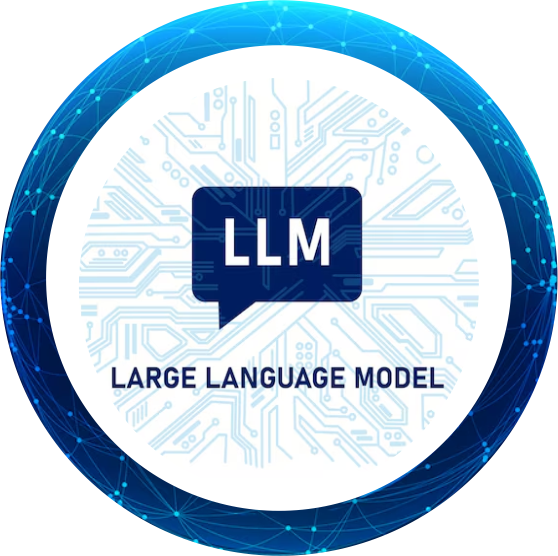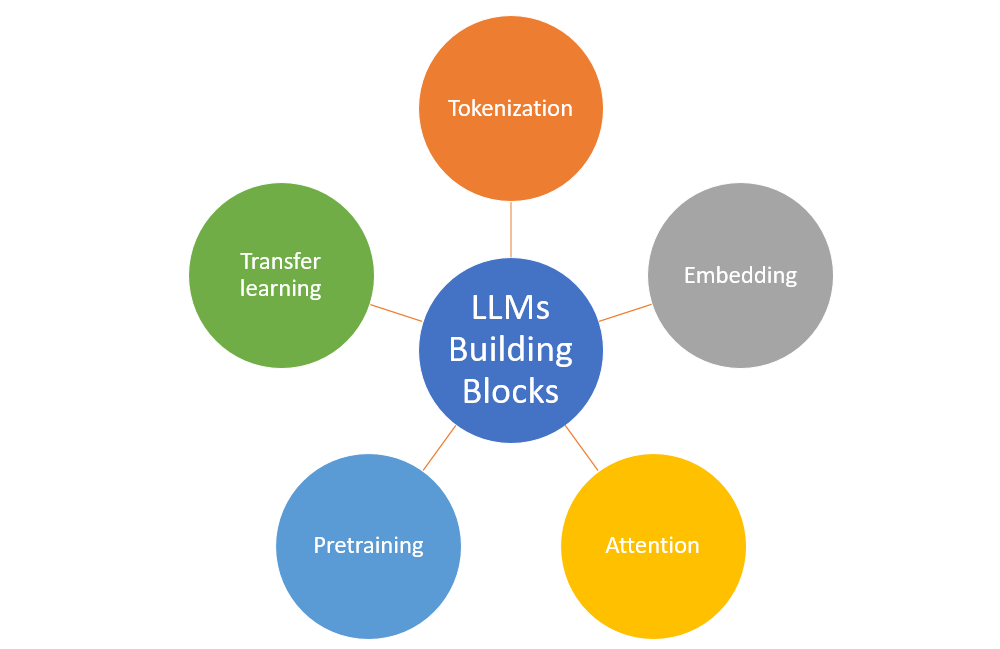Large Language Model(LLM)


in Data Science and AI
LLMs power today’s most advanced AI systems, including chatbots, copilots, search engines, and creative tools.
They understand and generate human-like text, enabling applications in customer support, content creation, summarization, and more.
LLMs like GPT, LLaMA, Claude, and Gemini perform zero-shot and few-shot learning, allowing flexible use without retraining.
They support natural language interfaces to databases, APIs, and applications—transforming how users interact with software.
LLMs have revolutionized data preprocessing, analysis, and automation across data science workflows.
They are foundational to generative AI, used in text-to-image, text-to-code, and multimodal applications.
LLMs can be fine-tuned or prompted to specialize in domain-specific tasks such as legal advice, education, or programming.
Their underlying architecture—Transformers—is now a standard in NLP and even in computer vision and audio processing.
Open-source LLMs are fueling innovation in enterprise and research, making cutting-edge AI accessible and modifiable.
Mastering LLMs empowers learners to build, evaluate, and deploy modern AI applications responsibly and efficiently.

Module 1: Introduction to LLMs
What are Large Language Models?
LLMs vs traditional NLP pipelines
Real-world applications of LLMs
Evolution: BERT → GPT → LLaMA → GPT-4 / Claude / Gemini
Generative AI and LLMs
Module 2: NLP Foundations for LLMs
Text preprocessing and tokenization
Embeddings and vector space models
Language modeling: N-grams vs neural models
Attention mechanism: motivation and benefits
Module 3: Transformer Architecture
Self-attention and multi-head attention
Encoder-decoder vs decoder-only models
Positional encoding
Layer normalization, residual connections
Pre-training and fine-tuning process
Module 4: Types of LLMs
Autoregressive Models: GPT, Mistral, LLaMA
Masked Language Models: BERT, RoBERTa
Instruction-Tuned Models: ChatGPT, Claude
Multimodal Models: Gemini, GPT-4o
Open-Source Models: Falcon, Mistral, LLaMA-3
Module 5: Tokenization and Embedding
Byte Pair Encoding (BPE), SentencePiece
Vocabulary size and trade-offs
Embedding layers in LLMs
Role of context length
Module 6: Training and Scaling Laws
Pre-training objective (causal, masked, contrastive)
Datasets used for pretraining (Common Crawl, Wikipedia, etc.)
Scaling laws for compute, data, and model size
Training infrastructure and parallelism
Module 7: Prompt Engineering
What is prompting?
Zero-shot, one-shot, and few-shot examples
Chain-of-thought (CoT) prompting
Role prompting, system prompts
Prompt injection and security risks
Tools: LangChain, Guidance, PromptFlow
Module 8: Fine-Tuning and Adaptation
Full fine-tuning vs parameter-efficient tuning (LoRA, QLoRA, PEFT)
Instruction tuning and supervised fine-tuning (SFT)
Reinforcement Learning with Human Feedback (RLHF)
Dataset design for custom LLMs
Evaluation and safety tuning
Module 9: Inference and Deployment
GPU/TPU requirements and inference strategies
Quantization and model compression (8-bit, 4-bit)
Using LLMs via API (OpenAI, Hugging Face, Cohere)
Local deployment of open-source models
Streaming and low-latency response tuning
Module 10: Evaluation of LLMs
Accuracy, coherence, hallucination rate
BLEU, ROUGE, perplexity, BERTScore
Human evaluation methods
Benchmarks: HELM, MMLU, TruthfulQA
Module 11: Building Applications with LLMs
Text summarization, rewriting, translation
Code generation and explanation (Code LLMs)
Semantic search with vector databases (FAISS, Chroma)
Chatbots and virtual assistants
Agent frameworks: LangChain Agents, AutoGPT, CrewAI
Module 12: Tools & Ecosystem
Hugging Face Transformers and Datasets
OpenAI Assistants API
LangChain, LlamaIndex, Vector DBs
Gradio, Streamlit, FastAPI
MLflow and Weights & Biases for tracking
Module 13: Multimodal and Vision-Language LLMs
Introduction to multimodal transformers
Image captioning (BLIP, Flamingo)
Text-to-image (DALL·E, Stable Diffusion)
Vision-Language models (GPT-4o, Gemini)
Speech and audio with Whisper, Bark
Module 14: Ethical, Legal, and Social Implications
Bias and fairness in LLMs
Hallucinations and misinformation
Copyright and licensing issues
Open-weight vs closed-weight models
Regulatory frameworks (EU AI Act, NIST)
Module 15: Capstone Projects and Case Studies
Build a custom Q&A chatbot using OpenAI API
Deploy a local open-source LLM using Hugging Face
Fine-tune a model using PEFT on a domain-specific dataset
Integrate LLM with search using RAG (Retrieval Augmented Generation)
Build a generative agent with memory and context

